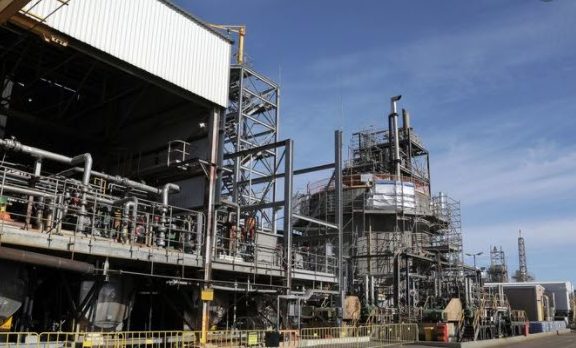Adds details of crude imports to Kwinana in sixth paragraph
Sydney, 30 October (Argus) — BP is to convert its 146,000 b/d Kwinana refinery in Western Australia (WA) to an import terminal, in the latest downstream closure to hit the region amid weak markets and rising competition from China.
All refining activities at Kwinana — Australia’s largest refinery — will cease in six months, as low margins mean the plant is not economical to run, BP said.

Kwinana refinery in Western Australia (WA)
“Regional oversupply and sustained low refining margins mean the Kwinana Refinery is no longer economically viable. Having explored multiple possibilities for the refinery’s future, BP has concluded that conversion to an import terminal is the best option,” the company’s Australia head Frédéric Baudry said.
Refining activity will wind down over the next six months. BP did not say when import terminal operations would begin.
The new terminal, once complete, is likely to support around 60 jobs, less than 10pc of the refinery’s 650 workforce.
The refinery relies almost wholly on imported crude. Seaborne crude deliveries to Kwinana have averaged 132,000 b/d since the start of 2018, according to Vortexa data. The majority of this has comprised 47,000 b/d of light sour UAE Murban crude, 42,000 b/d of light sweet Malaysian grades — mainly Kimanis and Bunga Orkid — and 21,000 b/d of US light sweet WTI.
The closure comes despite moves by the Australian government, announced last month, to provide subsidies to refiners as part of efforts boost the country’s diesel storage capacity. BP did not comment on those plans in today’s announcement.
Kwinana is one of only four refineries left in Australia, following the shutdown of over 300,000 b/d of capacity in 2012-15. It is the country’s single-largest refinery and the only plant in the relatively sparsely populated state of WA.
Two of Australia’s other refineries are also facing an uncertain outlook and may be converted into import terminals. Ampol, formerly Caltex Australia, is reviewing its 109,000 b/d Lytton refinery in Queensland, while Viva Energy is examining the long-term viability of its 128,000 b/d Geelong refinery in Victoria as margins are hit by slumping demand and regional overcapacity. That leaves ExxonMobil’s 90,000 b/d Altona refinery in Victoria as the only plant left without a question mark over its future.
The decision to halt refining activity at Kwinana is a response to long-term structural changes to the regional fuel market, BP said. The conversion to an import terminal will not affect fuel supplies to WA, it added.
BP said it is assessing the feasibility of a large-scale hydrogen export plant at Geraldton in WA in partnership with the federal government. A multi-use clean energy hub could produce and store lower-carbon fuels, including sustainable aviation and marine fuels and waste-to-energy solutions such as renewable diesel, it said.
The company’s other operations in Australia are unaffected. These include a one-sixth share of the 16.3mn t/yr North West Shelf (NWS) LNG venture offshore WA, as well as plans to drill the Ironbark gas field in the Carnarvon basin offshore the state.
Asia-Pacific refineries are struggling to compete with rising exports from China, as the Covid-19 economic slump drives down margins. Refining NZ last month said it will operate its 135,000 b/d Marsden Point plant at reduced capacity next year, postponing any immediate plan to convert New Zealand’s sole refinery to an import terminal. Shell permanently shut its 110,000 b/d Batangas refinery in the Philippines in August, while fellow Philippine refiner Petron has threatened to close its 180,000 b/d Bataan plant unless it gets more government support.

